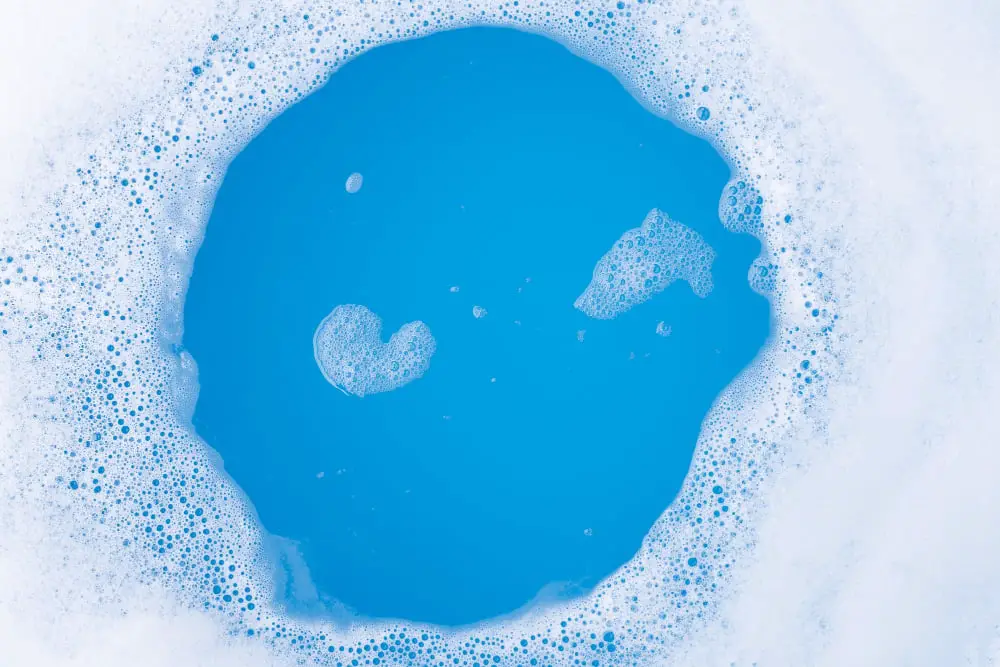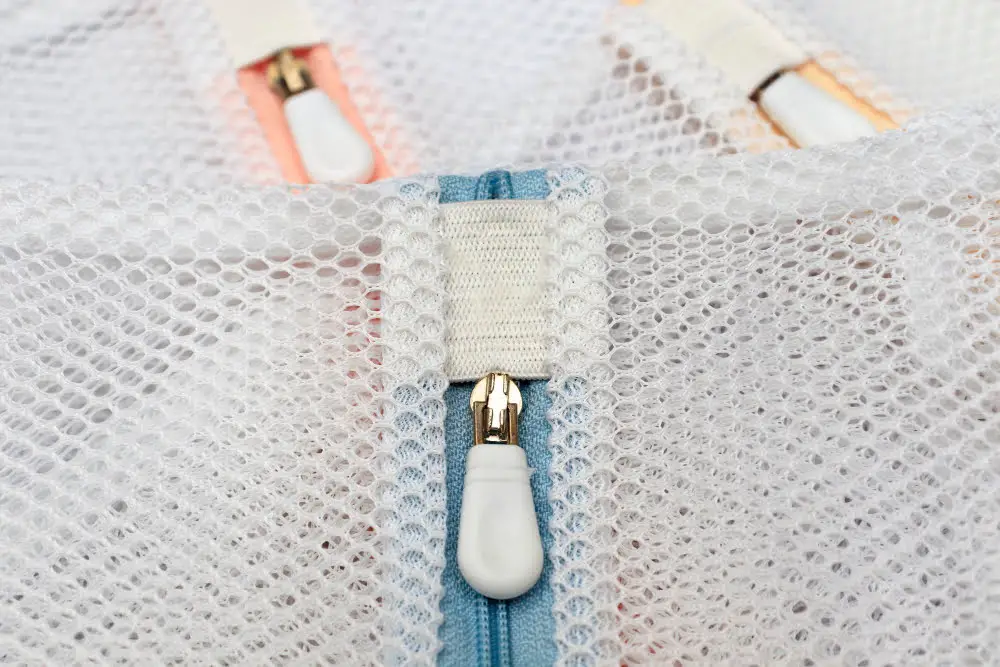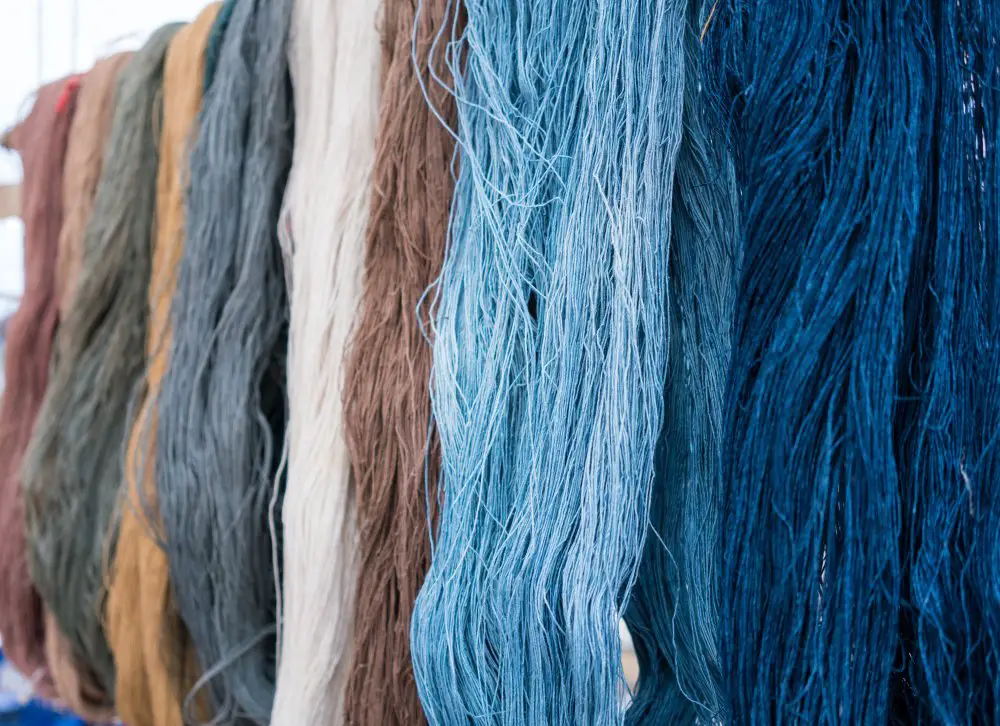Discover the best practices to effectively clean and maintain acrylic yarn without causing any damage or shrinking.
Washing acrylic yarn can seem like a daunting task, but it doesn’t have to be. With the right approach, you can keep your yarn looking vibrant and free of damage.
This article will guide you through a step-by-step process on how to properly wash acrylic yarn, from choosing the right detergent to drying methods. By following these steps, you’ll ensure your yarn maintains its quality and longevity.
Stay tuned for all the necessary details to make your yarn washing experience a breeze.
Key takeaways:
- Read yarn labels for care instructions
- Hand-wash acrylic yarn to preserve integrity and prevent damage
- Machine-wash in a mesh bag on a gentle cycle with cool or warm water
- Store yarn in a cool, dry place away from sunlight
- Follow safety measures to avoid shrinking or warping the yarn
Understanding Acrylic Yarn Labels for Proper Care

Reading a yarn label is crucial to understanding the care it requires. Not all fibers can be treated the same way, and mistakes can lead to unwanted results like shrinkage or loss of shape.
Let’s examine the basics:
- Look for the care symbols on the yarn label, which will indicate, among other things, if the yarn is machine washable or should only be washed by hand.
- The temperature at which the yarn should be washed, if machine washable, is typically represented by a tub with a number inside.
- The drying symbols will specify the yarn’s drying process. A square with a circle inside indicates machine drying, while a simple square infers it should be air-dried.
- The ironing and bleaching symbols are also critical. A triangle denotes the use of bleach, while an iron icon will inform you whether ironing is safe for this yarn.
- Last but not least, there are professional cleaning symbols, a circle inside a square indicates a professional wet cleaning process.
Ensure you follow these care directions to maintain the color, shape, and overall quality of your acrylic yarn items.
Steps for Hand-washing Acrylic Yarn

To treat your acrylic yarn with care, follow these hand-washing steps:
Firstly, fill a basin with cool to lukewarm water. Avoid hot water as it can cause the yarn to lose form and color.
Then, apply a gentle or wool-specific detergent, mixing it well in the water. This will ensure your yarn is cleaned without causing unnecessary damage.
Submerge your acrylic yarn or item in the water. Gently squeeze the yarn to allow the soapy water to fully penetrate the fibers.
It’s important not to wring or scrub the yarn, as these actions may cause the yarn to felt or distort. Instead, let it sit in the soapy water for about 15 minutes.
After soaking, drain the basin and refill it with clean, cool water. Rinally, rinse the yarn several times until no suds remain.
For drying, gently squeeze excess water from the yarn by pressing it against the sides of the basin. Do not twist or wring it out.
Place the yarn or item flat on a clean, dry towel and roll it up to absorb any remaining moisture.
Finally, reshape the yarn or item on a flat surface and let it air dry completely.
Remember, the main goals in washing are to avoid upsetting the shape or color of the item while still getting it clean. Be gentle and patient throughout the process for best results.
Benefits of Hand-washing Acrylic Yarn

Hand-washing acrylic yarn preserves its integrity and longevity. It’s gentle on fibers and prevents the risk of snagging or pilling that could happen in machine washes.
You can control water temperature better, using lukewarm water to avoid damage. It also gives opportunity to use mild, yarn-friendly detergents, and to carefully address any stains or spots.
In addition, it’s a perfect choice for delicate items or larger projects that might not fit in the washer. It reduces the wear that washing machines may cause, preserving the project’s form and shape.
Finally, hand-washing allows to carefully squeeze excess water (instead of wringing), maintaining yarn’s structure, and laying it flat to dry, which makes the finished project retain the original size and prevent stretching.
Tips for Machine-washing Acrylic Yarn

Make use of a mesh laundry bag or pillow case to protect yarn from getting tangled – it’s an easy step but makes a tremendous difference.
Acrylic yarn tends to ‘relax’ a bit in the wash, so a gentle or delicate cycle is optimal to prevent unnecessary wear and tear.
Many washing machines offer the function to control the water temperature, in this case, select cold or warm setting. Hot water can damage the yarn and possibly cause shrinkage.
Avoid the heavy-duty cycle; the intense agitation can lead to pilling, fuzziness, or even fraying of yarn.
When it comes to drying, never wring out the yarn; it can stretch and deform it. A better way is to carefully squeeze out excess water or roll it up in a towel.
Finally, air drying is the best choice for acrylic yarn. If a dryer must be used, choose a low heat or air fluff setting.
Remember, while machine-washing can be a time saver, it’s still best to check the care label on the yarn to verify these guidelines are suitable.
Caring for Your Crochet and Knitting Projects Made From Acrylic Yarn

Once your acrylic yarn project is finished, additional care is needed to help it maintain its form and vibrant colors. Here are some guidelines:
Proper storage is key. Avoid sunlight to prevent fading of colors, and keep your project in a cool, dry place to maintain its form.
In case of staining, prompt cleaning is advised. Gently blot the stain with a clean cloth to avoid it from setting.
Light steaming can help maintain the item’s shape. Steam from a distance to avoid melting the fibers.
Piling can occur with wear and tear. Regular de-pilling allows your project to keep looking neat and tidy. Use a fabric comb or sweater shaver for this.
Avoid heavy twisting or wringing which might cause distortion.
In case of heavy soil, professional cleaning is advisable to prevent damage to the project.
Remember to be gentle with your project to make it last longer and keep looking beautiful.
Maintaining Acrylic Yarn Quality Post-Washing

After the washing process, maintaining the quality of your acrylic yarn is paramount.
Ensure that the yarn is thoroughly rinsed. Any detergent left behind can affect the yarn’s texture and color over time.
An essential step is proper drying. Lay the yarn flat on a clean, dry towel and roll it up to press out excess moisture. Avoid wringing or twisting as this may distort the fibers.
Airdry the yarn by laying it flat in a well-ventilated room or outside under shade. Direct sunlight or heat sources such as radiators can cause the yarn to shrink or fade.
Once dry, store the yarn in a cool, dry place away from direct sunlight to prevent fading. Also, keeping yarn in a sealed container can protect against moisture and pests.
Regularly check your stored yarn for any signs of damage such as mould or pest infestation. Early detection can prevent the ruin of entire yarn stash.
Lastly, remember not to use harsh chemicals or abrasive cleaning tools on acrylic yarn. Their use might lead to fading, fiber damage, and loss of sheen.
Safety Measures When Handling Acrylic Yarn Pre and Post-Washing

To ensure the longevity of your acrylic yarn and its finished products, follow these safety measures:
Consider the color of the yarn. Dark colored yarns may bleed when washed, especially for the first time. Test a small sample first, if possible, before washing the entire lot.
Balancing the load in the washing machine is crucial. Acrylic yarn can absorb a lot of water and become heavy. Balancing the load prevents the machine from becoming lopsided and causing damage.
Temperature is a key factor to remember. Acrylics should never be exposed to hot water or a hot dryer as they can shrink, warp, or even melt.
Do not wring or twist the yarn or finished item. This could lead to warping the yarn or the stitches in your finished item. Instead, press out the water gently.
Avoid drying in direct sunlight. Acrylic yarn colors can fade if they are left in the sun for long periods.
Use of fabric softeners is not recommended. Acrylic yarn is designed to be soft, so adding more softener could make it overly slippery, causing difficulty with handling.
Opt for air drying whenever possible. If drying in a machine is necessary, turn on the lowest heat setting, or even better, use an air fluff setting.
Acrylic yarn and finished items should also be stored in a cool, dark place to avoid damage from sunlight and heat.
When ironing a finished acrylic product, use the lowest heat setting and avoid direct contact with the iron by using a pressing cloth.
These simple, yet effective practices can make your acrylic yarn last longer and retain its quality even after multiple washes.
FAQ
Can you machine wash 100% acrylic yarn?
Yes, 100% acrylic yarn can be machine washed separately in lukewarm water on a gentle or knit cycle with mild soap, rinsed well in cold water and spin dried on gentle cycle, and finally machine dried on a low setting.
How do you wash acrylic yarn before using it?
To clean acrylic yarn before using it, immerse it in warm water with a bit of laundry detergent, let it soak for some time, and after draining the water, softly squeeze out any remaining water.
Will acrylic yarn melt in the dryer?
Acrylic yarn can indeed melt in the dryer if subjected to high-heat settings, due to its heat-sensitive fibers.
What detergents are safe to use on acrylic yarn?
Acrylic yarn can be safely cleaned with mild, bleach-free, and alcohol-free detergents.
How to prevent pilling when washing acrylic yarn?
To prevent pilling when washing acrylic yarn, it is important to wash it on a delicate cycle in cold water and lay it flat to dry.
Is hand washing preferred for maintaining the quality of acrylic yarn?
Yes, hand washing is generally preferred to maintain the quality of acrylic yarn, as it helps preserve the fiber’s shape and prevent possible damage from high temperatures.





